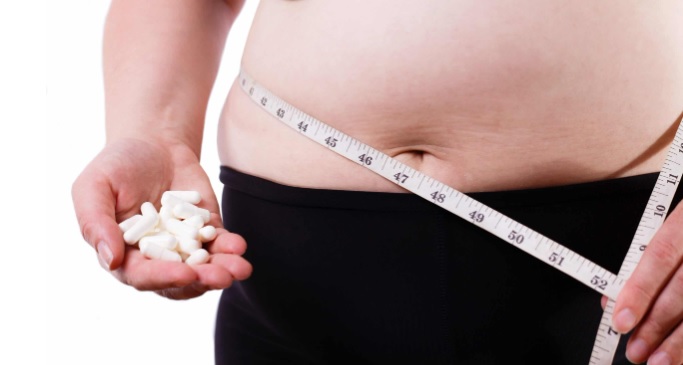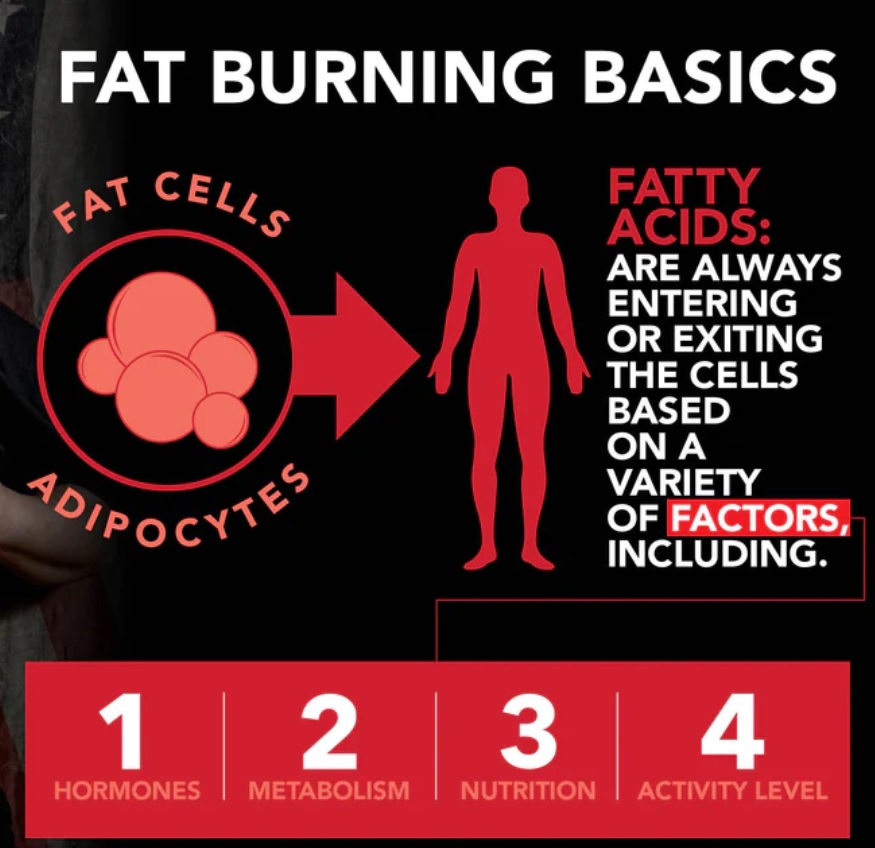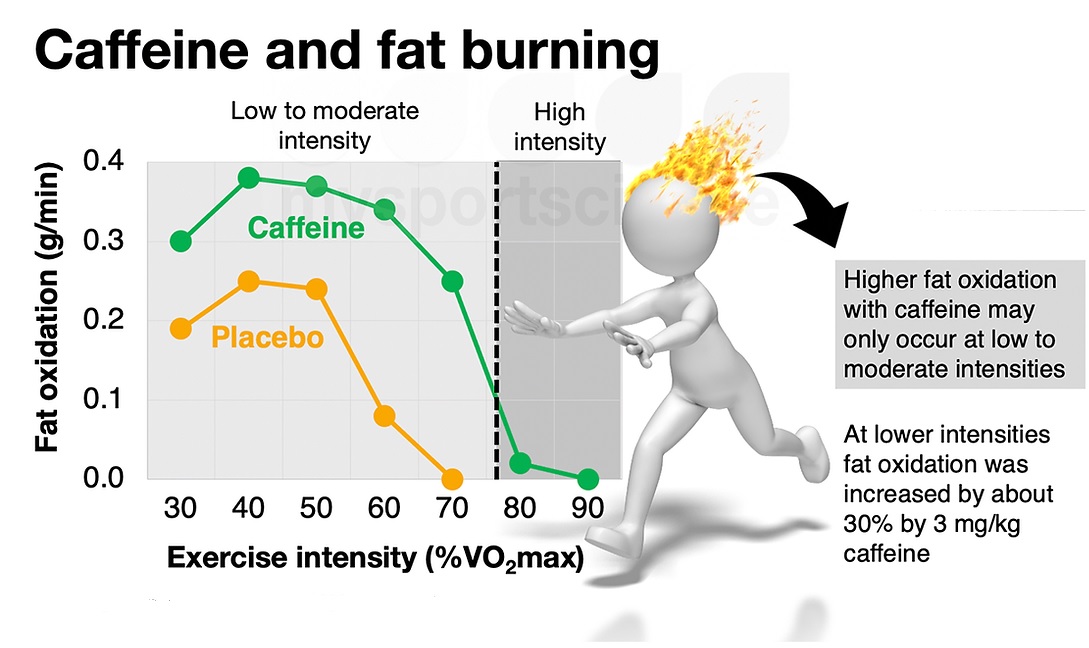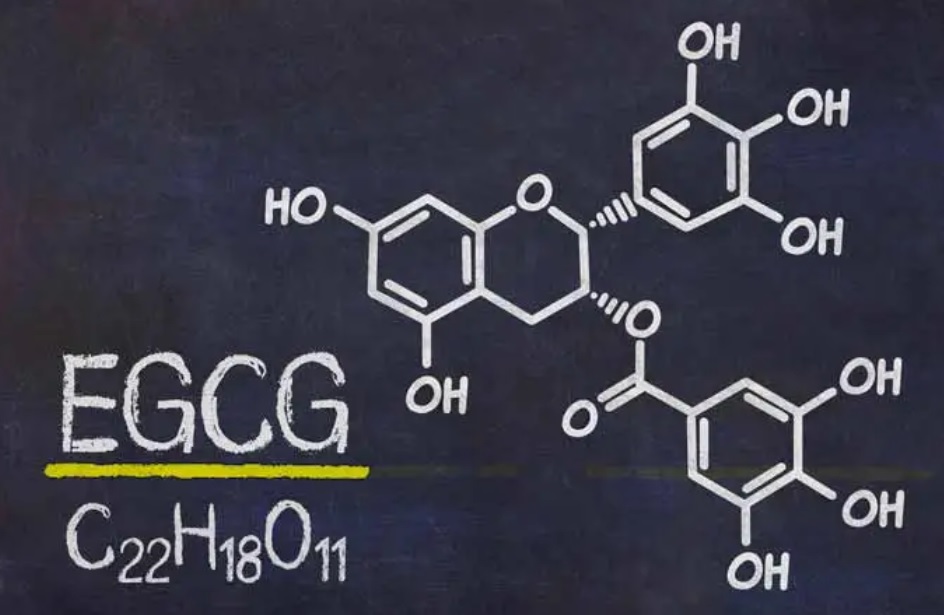In today’s time and age, staying fit and healthy has garnered interest from people in every walk of life. Losing weight is an important part of regaining fitness and one of the most important mechanisms of weight loss involves the burning of fat.
Certain substances can burn fat, thus promoting a reduction in fat loss. This is brought about by an increase in the metabolic rate, influencing the BMI, and many other physiological changes that accompany the loss of body weight.
To understand how these “fat burners” work, it is important to comprehend the concept of metabolism and how it can promote a loss of body fat.

What IS METABOLISM?
It is important to understand metabolism, how it works and how it influences body processes. Let’s take a brief look.
- All living creatures are built up of the basic living unit: the cell. Chemical processes occur continually within each cell, consuming and releasing energy in the process.
- These responses are classified as anabolic or catabolic. The former uses energy to construct molecules, whereas the latter emits energy as it degrades complex substrates (such as glycogen).
- At its most basic, metabolism is the total of all of the physiological events within the cell that are required to support life.
Now it should be rather clear that boosting the metabolic rate increases the speed of how rapidly anabolic and catabolic reactions take place in cells. In the case of losing fat, we want to avoid being in a positive or balanced energy status all the time since that would inhibit catabolic processes.
THERE ARE NO MAGIC SUPPLEMENTS
While digging into the elements to look for in a fat-loss supplement, it is crucial to understand that no supplement will “do the work for you” or compensate for bad food habits and a lack of activity.
As a result, the supplements discussed in this article should be taken in conjunction with a focused exercise and nutrition routine, rather than as a replacement for such lifestyle choices.
For practical purposes, it is advised to first and foremost get your nutrition and training plan on track before investing in fat burning supplements.

HOW DO FAT BURNERS WORK?
Fat burners, as the name implies, melt away the body’s accumulated fat. They are classed as follows based on how they seek to burn fat in the body:
Thermogenic Substances
- The term thermogenic refers to the process of creating heat. Foods that expend energy by producing heat are hence considered thermogenic.
- When we eat thermogenic meals, our bodies burn more calories and generate more heat. This results in fat loss and weight loss.
Supplements for Lipolysis
- Lipolysis aids in the breakdown of lipids, often known as fats.
- The calories consumed but not burned are deposited as fat.
- Fat buildup leads to an increase in weight.
- Lipolytic supplements, on the other hand, aid in the breakdown of fats stored in adipose tissue, which are then burned to produce energy.
Appetite Stimulants
- The main cause of weight gain is a caloric excess, or consuming more than you burn.
- Our appetite is therefore formed by hunger and desires (eating stimulated without hunger). Appetite suppressants, as the name implies, function by suppressing the desire to eat.
- This results in lower calorie consumption and, as a result, weight loss.
Now let’s take a look at some of the most effective fat-burning ingredients that you should consider when investing in a fat-loss supplement.
Acetyl- L- carnitine (ALCAR)
- Carnitine is a biochemical synthesized via the amino acids methionine and lysine.
- The biologically active form (L-carnitine) is required for the utilization and breakdown of fatty acids.
- An insufficiency of carnitine ultimately results in impaired entry of fatty acids and disturbed lipid oxidation.
- ALCAR increases levels of L-carnitine, which goes on to increase the oxidation of fatty acids in the mitochondria of cells.
- It also appears that ALCAR has a favorable effect when aimed to burn fat and retain muscle mass.
- ALCAR is most effective when taken in single doses of about 1g (up to 3g per day). Taking in excessive amounts of ALCAR is wasteful as most of it will be excreted through the urine to maintain nominal blood concentrations.
- It would be best to take ALCAR about 30-60 minutes before exercising (with or without a meal); it has a relatively long half-life so if it’s a bit longer than that it’s okay. If taking more than one dose per day, split them apart by about 5-6 hours.
CAFFEINE
- Caffeine is an organic substance found in coffee beans, cocoa, tea leaves, and other foods/plants.
- Caffeine causes the metabolic processes in the cell to “overdrive” and therefore, the elevated metabolic rate would be conducive to helping burn more calories.
- Based on research, caffeine appears to complement both aerobic and anaerobic exercise, as well as lower the rate of perceived exertion (RPE)
- Essentially, after taking caffeine, you generally have an increased athletic performance capacity.
- You can work harder and longer than those who work without caffeine use beforehand; this, in turn, would likely increase the calories and fat burned from exercise.
- It is generally recommended to take 1-3mg per kg of body weight at a time
- Do not go too crazy with caffeine dosing since there isn’t much benefit to extra amounts and it can be toxic at high enough doses (>5g)
- Take caffeine on an empty stomach about an hour before training.
- If you prefer to take caffeine with a meal, give yourself a bit more time before hitting the gym.
- If you notice no change or a decrease in performance, you will either want to adjust your dose or change the dose timing.

YOHIMBINE
- Yohimbine is a stimulant compound derived from the plant species Pausinystalia Yohimbe
- Research seems to suggest that, when taken pre-exercise, yohimbine enhances lipolytic (fat-releasing) activity by blocking the fat receptors
- It is further purported that yohimbine works most optimally in the absence of insulin
- Yohimbine intake needs to be carefully monitored.
- Yohimbine dosage will vary by body size, like with other supplements, and from scientific research, it appears that 0.1-0.3mg per kg of body weight at a time is a suitable quantity for fat reduction.
- You may also take up to three doses per day if necessary.
SYNEPHRINE
- Synephrine is another stimulant compound extracted primarily from citrus aurantium tree leaves.
- It can also be found in trace quantities of oranges and orange food products.
- It is structurally similar to the neurotransmitters epinephrine and norepinephrine and the dosage is about 0.3-0.5 kg of body weight.
- Synephrine enhances fat breakdown primarily by influencing the beta-adrenergic receptors
- It should preferably be taken before exercising (say 30-60 minutes pre-workout).
CAPSAICIN
- Capsaicinoids are the compounds found in peppers that give them spice.
- Research shows that capsaicin increases metabolism
- The measurement of capsaicin content in certain peppers is given as Scollville thermal units.
- Yet, due to stomach discomfort and other digestive issues, consuming huge amounts of spicy peppers to get minimal dosages of capsaicinoids is impractical.
- It is generally preferred to take capsaicin with meals since it may cause gastric irritation on an empty stomach.
- If you can tolerate it, then feel free to do it at other times.
GREEN TEA EXTRACT
- The primary constituent in green tea leaves responsible for this metabolic effect is the antioxidant epigallocatechin gallate (EGCG).
- Green tea extract is an important ingredient on fat burners as it has the potential to sustain burning of calories throughout the day
- EGCG enhances the activity of neurotransmitters like dopamine and epinephrine, which positively affects fat burning.
- It is also an anti-carcinogenic agent and has potent antioxidant effects.
- The positive metabolic effects are achieved with a dose of about 150-250mg of EGCG per day.
- Take green tea extract/EGCG about 30-60 minutes before you work out

PYRROQUINOLONE
- PQQ is an organic compound contained in bacteria and is primarily retrieved from fermented soybeans.
- Interestingly, PQQ acts to create new mitochondria in cells, a process known as mitochondrial biogenesis.
- PQQ functions as a cellular messenger, replicating some of the most fundamental physiological responses to exercise and eventually raising the body’s natural production of the hormone irisin. Circulating irisin levels are inversely connected with age, insulin, cholesterol, and adiponectin and favourably correlated with fat-free mass and ghrelin in humans.
- PQQ at 20mg and 60mg per day is effective and safe.
- The timing of PQQ is not too important since its effects are somewhat latent and develop after regular use has been established.
RASPBERRY KETONE (RK)
- It is the major aromatic compound of red raspberries (Rubus idaeus).
- It’s quite similar in chemical structure to synephrine and capsaicin discussed earlier.
- RK has been shown to significantly increase norepinephrine-induced fat breakdown.
- Moreover, RK has been shown to inhibit small intestinal absorption of dietary fat by suppressing pancreatic lipase (an enzyme secreted to break down fatty acids).
- Typical doses for RK range from 200-400mg per day (divided into at least two doses).
- It is suggested to take raspberry ketone twice per day, with one of those servings preferably 30-60 minutes before working out.
HESPERIDIN
- Hesperidin is a natural substance found largely in citrus fruits such as oranges, lemons, and limes that belongs to a class of organic compounds known as flavanones (a kind of glycosylated flavonoids).
- Along with many antioxidative properties, hesperidin appears to act synergistically to affect carbohydrate metabolism and subsequently decrease serum insulin
- Hesperidin acts by attenuating cellular stress and hyperglycemia.
- Moreover, hesperidin has been shown to reduce fat tissue and regulate the genetic expression of lipid metabolism-related proteins.
- It is advised to take around 500mg of hesperidin per day, preferably with food.
NARINGIN
- Naringin is another flavanone that is found in citrus fruits (especially grapefruit) and has a variety of antioxidative and metabolic effects in humans.
- It also inhibits several cytochrome p450 enzymes, so care should be taken if using naringin and hesperidin while taking drugs that act on those enzymes.
- Similar to hesperidin, naringin appears to possess lipid-lowering and carbohydrate-regulating properties.
- Studies show that naringin decreases insulin resistance, hyperglycemia, and dyslipidemia.
- A nominal dose of naringin is around 500-1000mg taken orally.
FORSKOLIN
- It belongs to a class of organic compounds known as terpenes and is derived from the Indian plant Coleus forskohlii.
- Forskolin usage increases intracellular levels of cAMP and has been shown to raise lipolysis
- Forskolin also acts on the endocrine system to increase testosterone levels, which has ramifications on lean body mass.
- Human studies reveal that two dosages of 250mg Coleus forskohlii extract (standardized to 10% forskolin) were sufficient to generate substantial changes in fat-free body mass and cAMP levels.
- Because some of the effects of forskolin are mediated by the endocrine system, delivery timing does not appear to be critical. However, it is better to divide the amount into two doses each day and take one of those doses around an hour before exercising.
If you decide to use a fat burner, remember that it is not a miracle pill that will make you slim without you having to do anything. A calorie deficit is always necessary for weight loss; it will not function otherwise.
Physical activity should not be overlooked. If food and exercise are not a problem for you, but you are still seeking something to help you lower your body fat percentage, a fat burner can be a great option.
It can energize you, and improve your concentration, and motivation, resulting in a rise in the number of calories expended during exercise. It is crucial to note that, while fat burners can help with weight loss, they should not be used as the main way of weight loss. Maintaining a healthy weight requires a well-balanced diet, regular exercise, and adequate rest.
Overall, the safety of fat burners is determined by the individual and the exact substance used. Individuals can safely add fat burners into their weight reduction journey by conducting research, consulting with a healthcare expert, and using as prescribed.
To see results takes time and consistency. However, various indicators can reveal whether or not the supplement is effective. To begin, you may notice an increase in energy and endurance throughout workouts.
Frequently Asked Questions (FAQs):
When should you use fat burners?
In general, fat burners should be taken first thing in the morning or right before your workout. The reasoning behind this is that your metabolism is at its slowest when you wake up or immediately before working out.
When do fat burners work best?
This subject is not as simple as it appears because there are occasions when a fat burner supplement should be taken to optimize its efficiency. It’s critical to understand the chemicals in the product you’re using, as well as how the product might help you achieve your body composition goals.
Will fat burners work if you don’t follow a strict diet and workout routine?
The short answer is no, and there is no such thing as a fat burner that will allow you to burn fat just by taking it without following a good diet plan. As a result, be skeptical of anyone who claims to have found such a thing.
What effect do fat burners have on your body?
A fat burner can provide the following advantages:
- Improving fat metabolism
- Increased energy use.
- Fat absorption is hindered
- An increase in satiety (fullness)
- Fat oxidation increased during exercise.
Why should you use fat burners?
Fat burners are a great way to boost the effects of a well-structured healthy weight-loss regimen. They contain numerous important nutrients that can help you achieve your body composition goals.
Can fat burners be used as a pre-workout supplement?
Yes. A fat burner can be used as a pre-workout supplement, although this is not its intended function. Some fat burners contain ingredients like caffeine to assist in enhancing energy levels and increase fatty acid oxidation.









